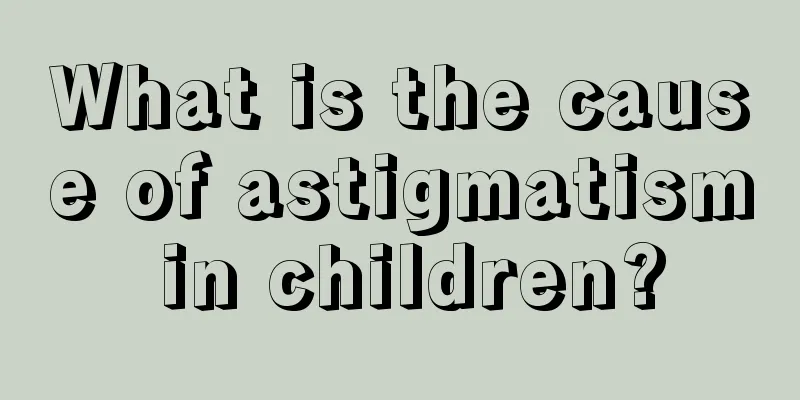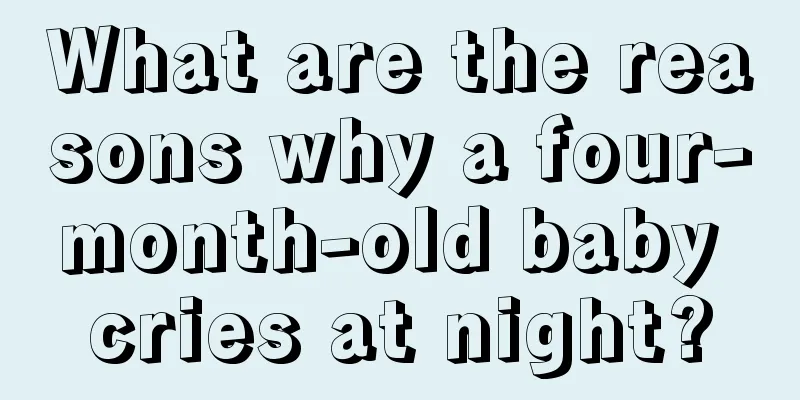Symptoms of colic in six month old baby

|
Six-month-old babies are usually still in the breastfeeding period. Babies at this stage do not have language function yet, so if they feel pain in their body, they will generally express it by crying. Colic is a common symptom that can occur in babies as young as six months old. So for babies who cannot express their discomfort verbally, how should we determine whether they have colic? Symptoms of colic in babies Mothers should be alert to their babies' colic. Once colic occurs, the baby will often have recurrent abdominal pain and crying. The symptoms will be better during the day, but in the evening or at night, there will be sudden and loud crying at irregular intervals, and the crying will continue for three or four hours. No matter what efforts are made, it is difficult to make the baby calm down. Most infants with this condition will experience restlessness, flushed face, curled knees, and fist-clenching and kicking legs. They will often have abdominal distension, or wind, which will not be relieved until the rapid intestinal peristalsis disappears or the gas is discharged. Usually the baby will calm down after a few hours of the attack. Causes of colic in babies The cause of colic is still not very clear. Possible factors include the following categories: gastrointestinal discomfort (intestinal flatulence, intestinal cramps, milk protein allergy, lactose intolerance and swallowing too much air, etc.), emotional problems and immature neurological development. It is generally believed that before a baby is four months old, the intestinal nerves are not yet fully developed, so intestinal peristalsis can easily be abnormally fast or slow, leading to colic. Does a baby crying in the middle of the night necessarily mean it has colic? To determine whether a baby has colic, you must first observe whether the baby is crying for other needs, such as being hungry, having a wet diaper, having a stuffy nose, the environment being too cold or too hot, or dreaming. Some babies also want to be held or played with after waking up. If none of these is the case, then you should consider whether the stomach pain is caused by colic. If the problem still cannot be ruled out, be sure to consult a pediatrician to identify whether the child has otitis media, intussusception, hernia or other intestinal obstruction problems to avoid delaying the condition. Intussusception is particularly common, and is the most common occurrence when the end of the small intestine runs into the large intestine. It means that the front part of the intestine is inserted into the intestinal cavity of the back part, causing swelling of the intestinal mucosa and intestinal obstruction. |
<<: Symptoms and treatment of colic in children
>>: Symptoms of colic in a one and a half year old baby
Recommend
Treatment for a child's unexplained fever
In fact, you will encounter many problems in the ...
Why do children have trouble sleeping?
Poor sleep at night refers to the inability to fa...
What should I do if my seven-year-old child has diarrhea?
Children's stomachs are generally fragile. If...
What’s a good way to treat children’s recurring high fever?
Many parents are very worried about their childre...
Is anemia serious for an eight-month-old baby?
Infant anemia can occur at birth or during growth...
Treatment and normal values of elevated cardiac enzymes in infants
Because babies are newborns, they have poor resis...
What should I do if my child doesn’t pay attention in class?
All parents hope that their children will do well...
What should I do if my baby is severely constipated? Combining multiple methods to solve the problem!
As we all know, constipation is very uncomfortabl...
Reasons why children do not gain weight
Most babies weigh between 5 and 7 kilograms after...
Symptoms of malnutrition in children
What are the symptoms of malnutrition in children...
How much rice cereal should a six-month-old baby eat?
After the baby reaches 6 months old, in addition ...
How to treat foaming at the mouth in babies?
Many babies have foaming at the mouth, which make...
Is it suitable for children to learn piano?
All parents in the world want their sons to becom...
Are mosquito coils harmful to babies?
I believe that many families use mosquito coils i...
What to do if your child has a collapsed nose
We all know that if our nose is high and straight...









